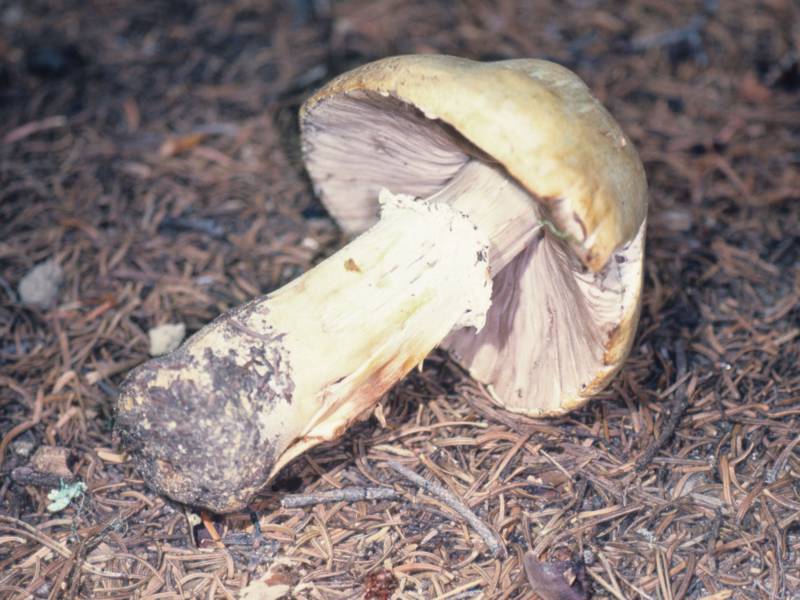Habitat: Oak
Spores: late fall through early spring
Conservation Status: Not of concern
Edibility: Edible, with a strong sweet flavor.
Edible, with a strong sweet flavor.
Cap: 7-18 cm broad, convex to broadly convex or plane; surface usually dry, smooth or fibrillose, at first white but quickly staining amber to yellow-orange when bruised and often entirely yellowish to yellow-orange to amber or ochraceous in age; margin often huge with veil remnants. Flesh thick, white, usually bruising yellowish if crushed; odor strongly sweet and aniselike or almondy. Gills: free at maturity, close, pallid, becoming grayish or grayish-pink, then eventually chocolate-brown or darker; often bruising yellow when immature. Stalk: 5-14 cm long, 1.5-3 cm thick, usually enlarged below (up to 5 cm thick), firm, white, or discoloring yellowish, smooth above the ring, smooth or slightly cottony-scaly below; flesh in base not usually bruising bright yellow, but exterior of base may. Veil: membranous, white or yellow-stained, with patches on under side that sometimes form a cogwheel pattern; rupturing to form an ample, superior, skirt like ring on stalk.
Sources: Arora, David. Mushrooms Demystified. Berkeley, Ten Speed Press, 1986.
PNW Herbaria: Specimen records of Agaricus albolutescens in the Consortium of Pacific Northwest Herbaria database.
CalPhotos: Agaricus albolutescens photos.



